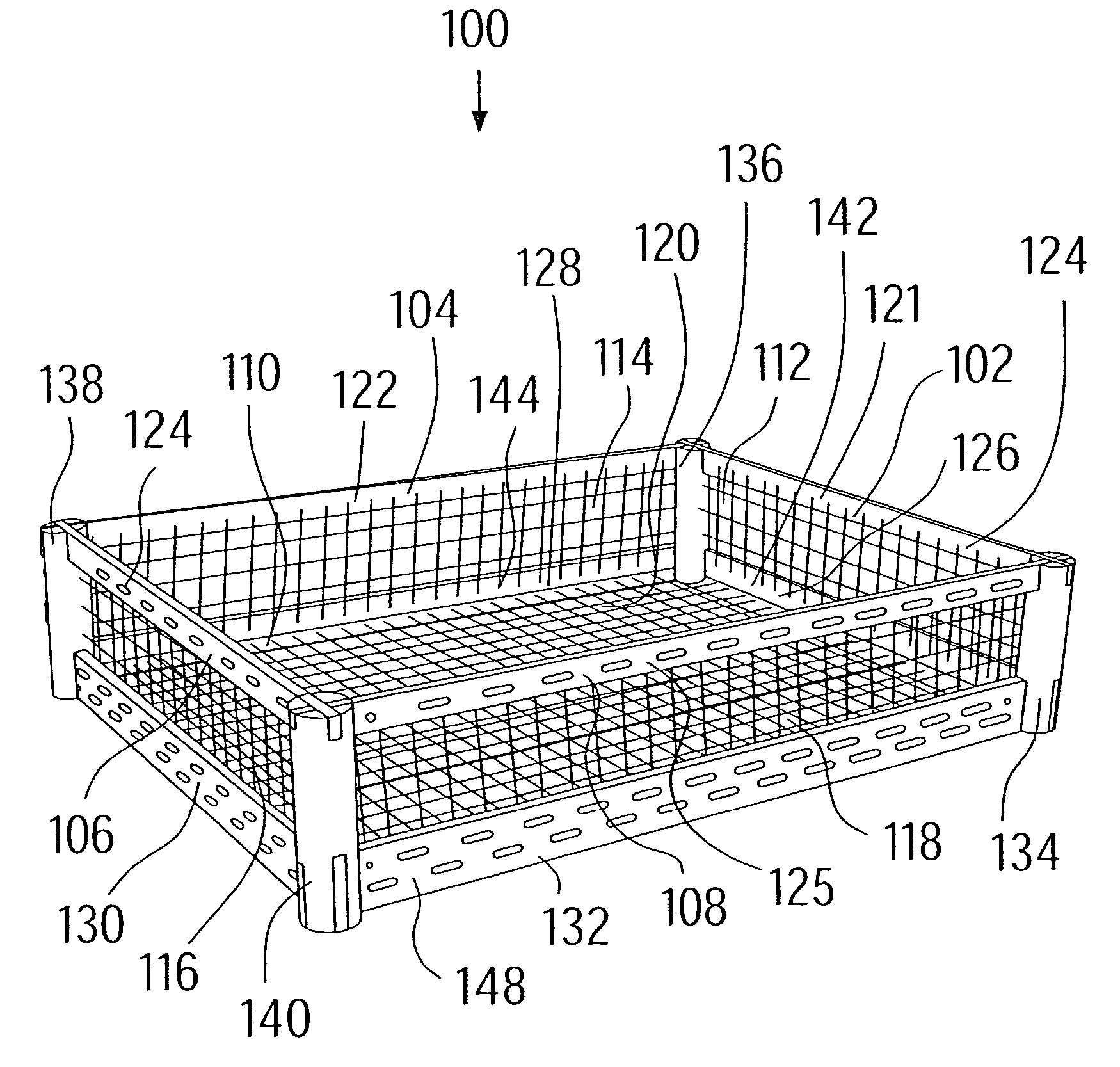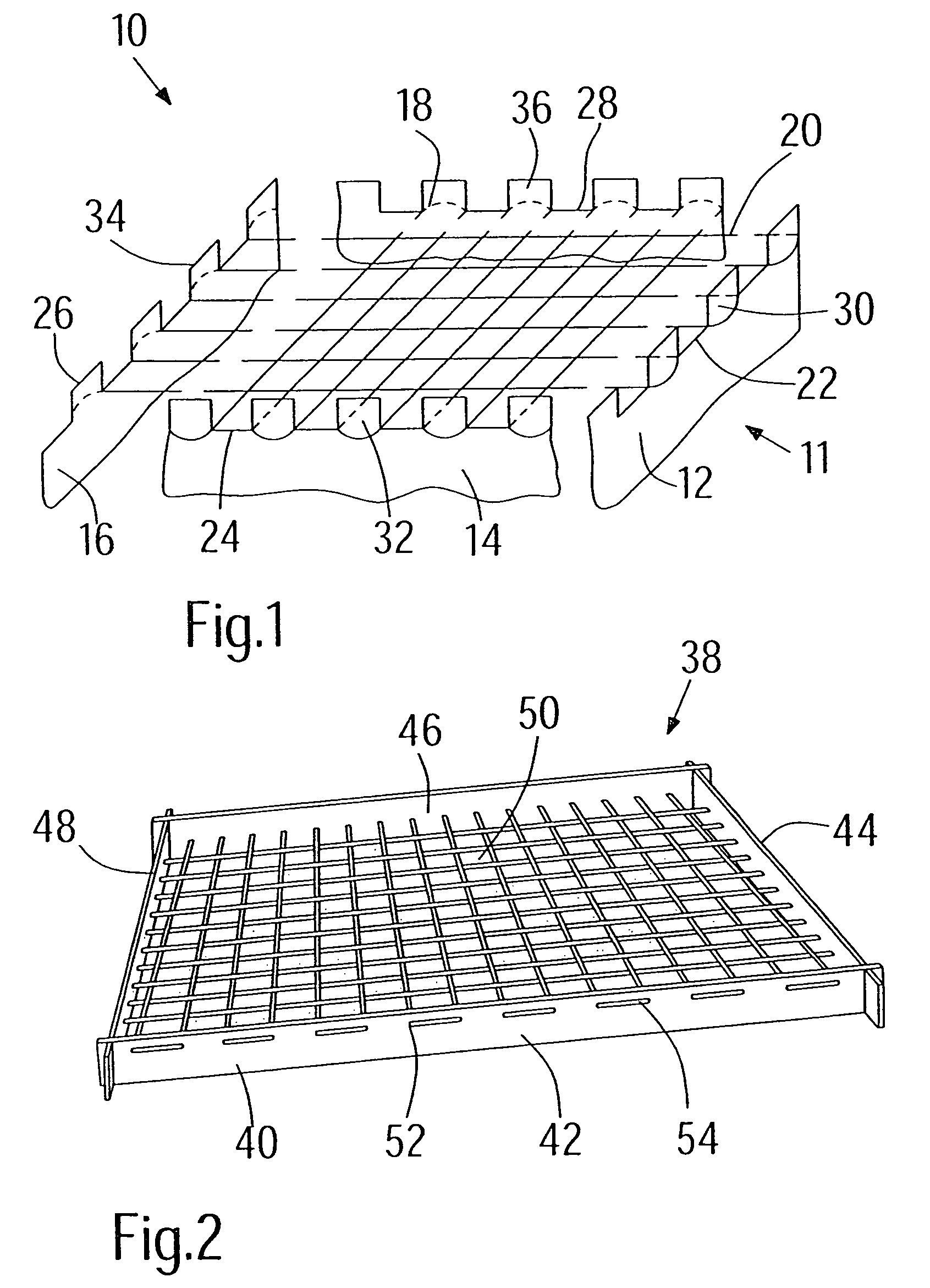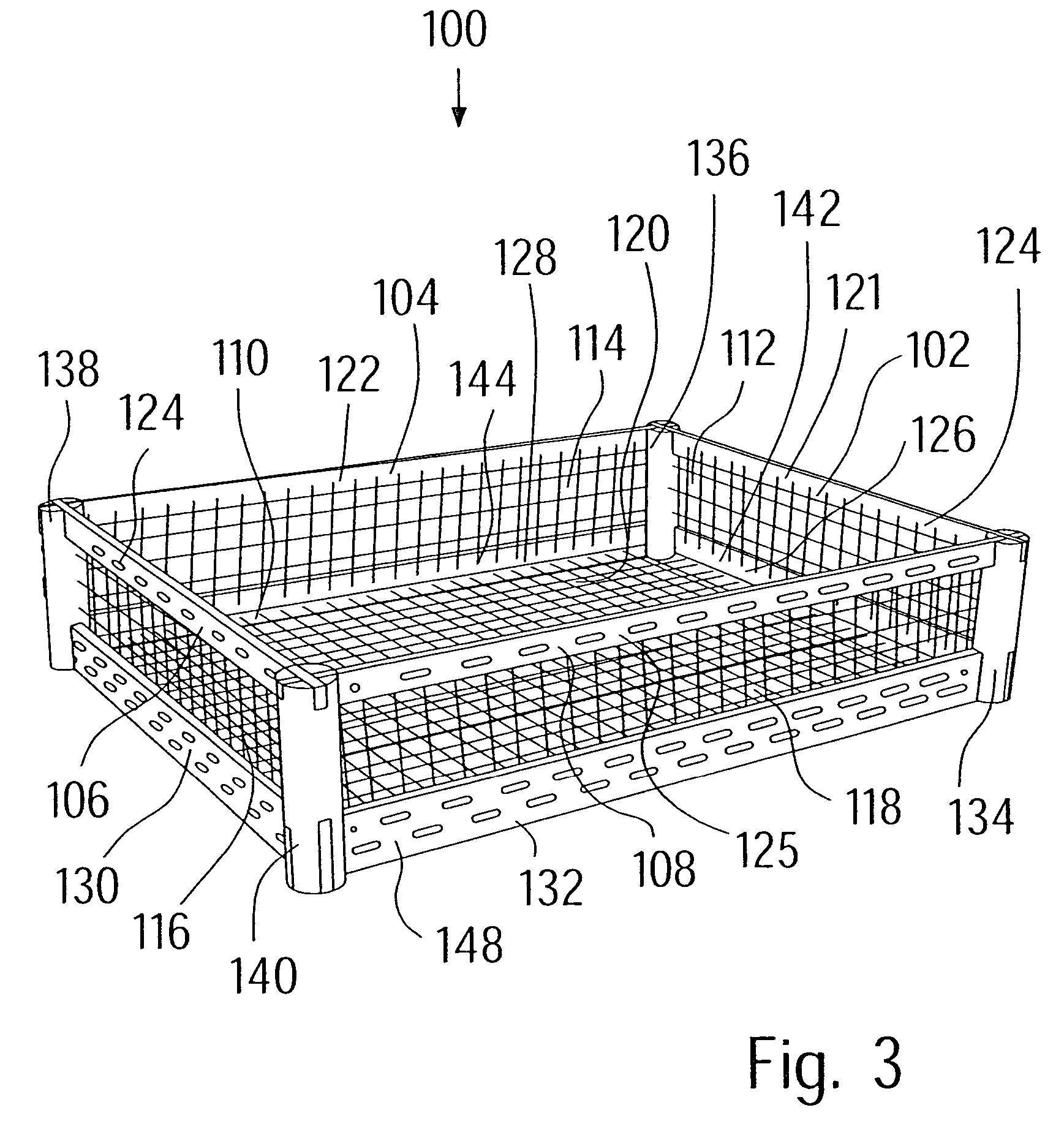Support for structural components and method for producing the same
a technology of structural components and supports, applied in the field of carriers, can solve the problems of high adjustment cost, increased waste of parts to be treated, holding devices, etc., and achieve the effect of good flowability through the lattice structur
- Summary
- Abstract
- Description
- Claims
- Application Information
AI Technical Summary
Benefits of technology
Problems solved by technology
Method used
Image
Examples
Embodiment Construction
[0052]FIGS. 1 and 2 show embodiments according to the invention of a more or less two-dimensional carrier, and FIGS. 3 and 4 of a three-dimensional carrier in the form of an open basket which has a parallelepiped geometry.
[0053]A carrier 10, which is to be used as a fibrous ceramic supporting structure, in particular, for positioning or fixing of e.g. metallic or ceramic parts or components during heat-treatment processes, is shown purely on principle in FIG. 1. The heat-treatment processes are e.g. sintering processes, hardening processes, finishing or soldering processes, which are carried out at temperatures of between 700° C. and 2600° C., typically between 800° C. and 1600° C.
[0054]To ensure that the carrier 10 is distortion-free, independently of any thermal cycles that might occur, it comprises carbon fiber-reinforced carbon or a fibrous ceramic and includes a frame 11 with limbs 12, 14, 1618 as well as a lattice 20 extending or stretching therefrom. In the embodiment of FIG....
PUM
| Property | Measurement | Unit |
|---|---|---|
| temperatures | aaaaa | aaaaa |
| temperatures | aaaaa | aaaaa |
| temperatures | aaaaa | aaaaa |
Abstract
Description
Claims
Application Information
 Login to View More
Login to View More - R&D
- Intellectual Property
- Life Sciences
- Materials
- Tech Scout
- Unparalleled Data Quality
- Higher Quality Content
- 60% Fewer Hallucinations
Browse by: Latest US Patents, China's latest patents, Technical Efficacy Thesaurus, Application Domain, Technology Topic, Popular Technical Reports.
© 2025 PatSnap. All rights reserved.Legal|Privacy policy|Modern Slavery Act Transparency Statement|Sitemap|About US| Contact US: help@patsnap.com



